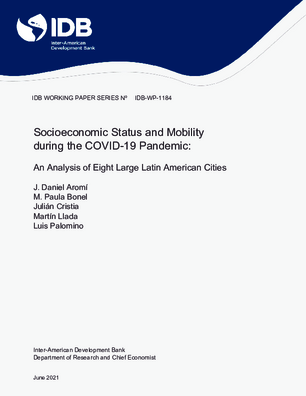Socioeconomic Status and Mobility during the COVID-19 Pandemic: An Analysis of Eight Large Latin American Cities
Date
Jun 2021
Summary
This study analyzes mobility patterns during the COVID-19 pandemic for eight large Latin American cities. Indicators of mobility by socioeconomic status (SES) are generated by combining georeferenced mobile phone information with granular census data. Before the pandemic, a strong positive association between SES and mobility is documented. With the arrival of the pandemic, in most cases, a negative association between mobility and SES emerges. This new pattern is explained by a notably stronger reduction in mobility by high-SES individuals. A comparison of mobility for SES decile 1 vs decile 10 shows that, on average, the reduction is 75% larger in the case of decile 10. According to estimated lasso models, an indicator of government restrictions provides a parsimonious description of these heterogeneous responses. These estimations point to noticeable similarities in the patterns observed across cities. We also explore how the median distance traveled changed for individuals that travel at least 1 km (the intensive margin). We find that the reduction in mobility in this indicator was larger for high-SES individuals compared to low-SES individuals in six out of eight cities analyzed. The evidence is consistent with asymmetries in the feasibility of working from home and in the ability to smooth consumption under temporary income shocks.




